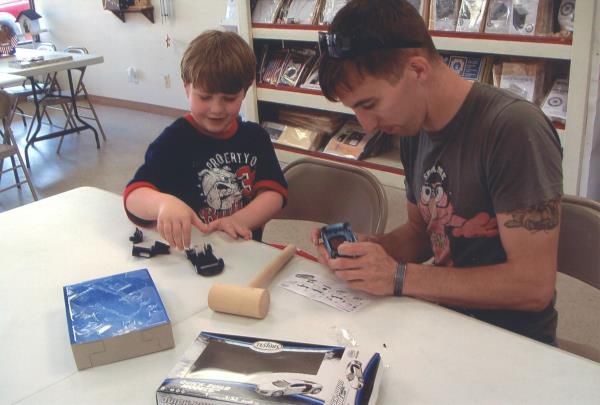
(StatePoint) When people hear there might be a bomb nearby, most will try to get as far away as fast as possible. U.S. Army Specialist Brandon Sanford and his bomb-sniffing dog Rexo, however, were not as lucky.
Sanford and Rexo were part of the Army’s bomb detection unit, tasked with finding life-threatening explosive devices. “I was nervous on the first patrol missions since our duty was to find explosives designed to kill American soldiers,” said Sanford.
When a roadside bomb exploded near his vehicle in 2008, Sanford suffered a traumatic brain injury (TBI), among other wounds. Because of his injuries, Sanford suffers from seizures as well as problems with balance, fine motor skills and more. Basic tasks like buttoning a shirt are now daunting endeavors for him. And so the long, arduous process of healing began. Along with surgery and physical therapy, craft therapy became part of Sanford’s treatment plan.
When men and women return from war or other military postings, they often bring home more than their duffel bags. That is why Help Heal Veterans (Heal Vets), a nonprofit founded during the Vietnam War, operates on the knowledge that not all medicine comes in a bottle. As America’s largest supplier of therapeutic arts and crafts resources, Heal Vets has distributed more than 29 million kits since 1971, averaging 43,000 kits per month. The kits consist of hundreds of craft categories like woodworking, leather, models and a variety of needlecrafts.
Many doctors and occupational therapists prescribe arts and crafts as an important component of a treatment plan. Such an approach provides tremendous therapeutic and rehabilitative benefits, including improving fine motor skills, cognitive functioning, memory and dexterity. Crafts can also help alleviate anger issues and the severity of post-traumatic stress disorder (PTSD) and TBI triggers, such as anxiety, memories, sadness and frustration.
In some cases, the benefits are physical as well. For example, stringing together a leather craft might help with hand-eye coordination and dexterity. Painting or model building can ease symptoms of PTSD or depression. Sanford said that working with small pieces has helped him with his hand-eye coordination. He also suffers from short-term memory problems associated with his TBI, so working on the kits helps train his focus and concentration skills.
Since World War I, craft kits have consistently proven effective tools for veterans’ rehabilitation and healing. According to a Health Care Data Inc. study, 89.6 percent of patients surveyed felt Heal Vets craft therapy helped maintain or improve their physical capabilities. Furthermore, craft projects help build family bonds when completed with loved ones, improve self-esteem and surface previously untapped artistic talent.
As Americans pay their respects this month to those who have served, Heal Vets encourages you to think about ways you can help enrich the lives of the 22 million U.S. veterans and military personnel. Heal Vets relies solely on charitable donations to produce its craft kits. For more information about the program or to donate art supplies, journals and other tools that spark creativity to a veterans’ organization near you, visit HealVets.org.
“Today, one of every three Iraq and Afghanistan veterans suffers from PTSD and/or TBI. Even more, the suicide rate for U.S. military members continues to rise. Reawakening veterans’ enthusiasm for life, therefore, remains an utmost priority,” said Captain Joe McClain, a U.S. Navy veteran and current Heal Vets CEO.






